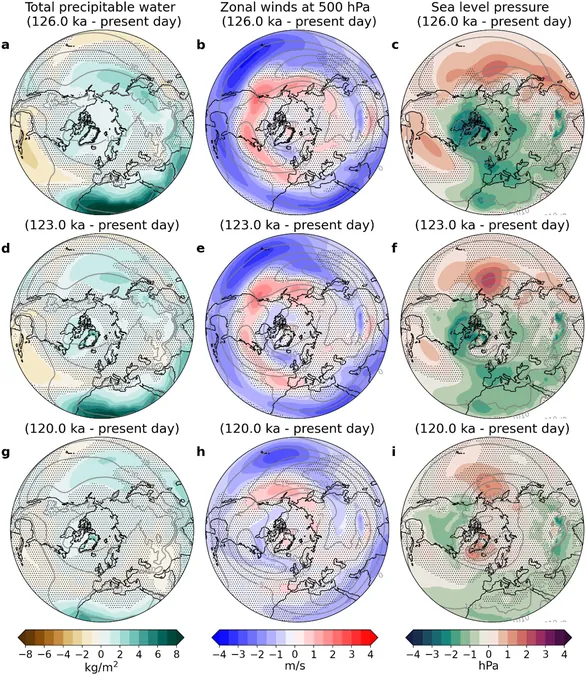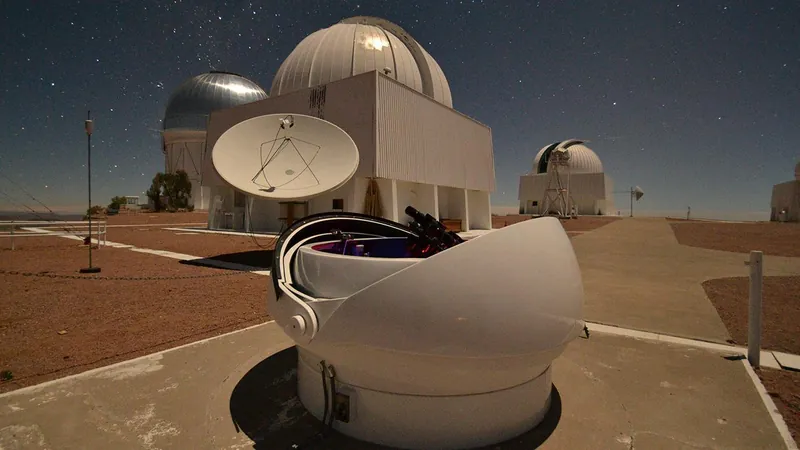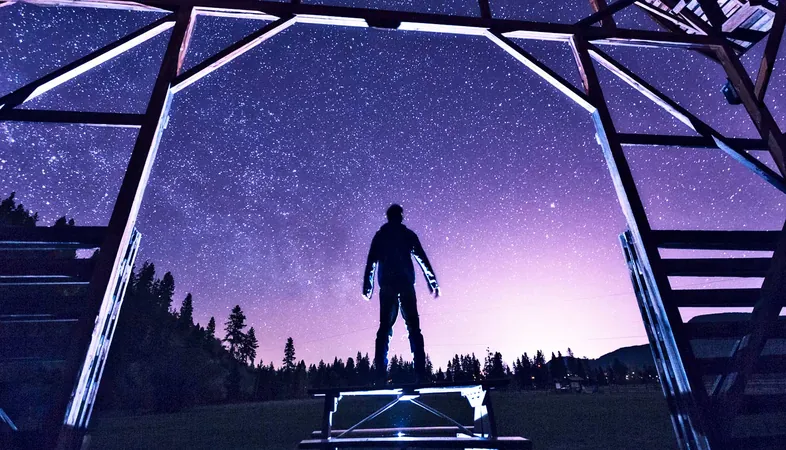
Sky Rivers and Arctic Warming: A Chilling Forecast for the Greenland Ice Sheet
2025-09-22
Author: Benjamin
The Rise of Atmospheric Rivers
"Atmospheric rivers" are making headlines more frequently, resembling vast rivers of moisture in the sky when viewed from space. While often associated with regions like California, these extreme weather systems can unleash not only intense rainfall but also elevate temperatures in mid to high latitude areas.
The Impact on the Greenland Ice Sheet
A team of researchers, led by UConn’s Clay Tabor and Ph.D. student Joseph Schnaubelt, investigated how these atmospheric rivers influenced the Greenland Ice Sheet in the past, aiming to predict their future effects as the climate warms. Their findings, published in AGU Advances, shed light on crucial historical climate scenarios.
A Glacial Cycle Insight
Paleoclimate experts like Schnaubelt and Tabor focused on the Last Interglacial period, around 130,000 to 115,000 years ago, a time when the Arctic was warmer than today. "Understanding this past period grants us insights into the trajectory we're heading towards in our climate crisis," Schnaubelt explained.
Dual Impacts of Atmospheric Rivers
Interestingly, atmospheric rivers can act as double-edged swords. They can contribute to ice sheet growth through substantial snow accumulation but can also introduce warmth that accelerates melting. Discerning these effects is vital, as melting ice sheets have significant implications for sea level rise.
Insights from a Sophisticated Simulation
Utilizing simulations from the National Center for Atmospheric Research (NCAR), the team was able to investigate the atmospheric river patterns during the Last Interglacial, influenced by Earth’s orbital changes. Schnaubelt noted, "When orbital configurations made the Arctic warmest, we observed an uptick in summertime storms impacting the ice sheet, pointing to future trouble as temperatures continue to rise."
Elevation Matters
Elevation also plays a critical role in how these atmospheric rivers affect ice. Precipitation can fall as rain at lower elevations, whereas at higher elevations, cooler temperatures lead to snow accumulation. As Greenland’s ice sheet melts and lower elevations are revealed, the impact of atmospheric rivers could become even more severe.
Weather Patterns and Climate Context
The team’s research aimed to connect weather phenomena to long-term climate changes, providing a clearer picture of how even a seemingly minor increase of 1°C could dramatically shift weather extremes. As Tabor articulates, "It’s vital to understand these shifts in perspective of future climate scenarios, especially in regions like the Arctic that are experiencing significant warming compared to the global average."
Historical Lessons for the Future
While the conditions of today aren’t an exact replica of the Last Interglacial, Tabor warns about the potential similarities. Small shifts in temperature can precipitate drastic sea-level changes, as evidenced by past experiences where even slight warming resulted in sea levels rising by six to nine meters (20 to 30 feet).
Long-Term Ice Sheet Responses
Histories show that the Greenland Ice Sheet responded to warming signals, continuing to melt even as the climate began to cool again. This indicates that if current warming trends persist, lasting consequences could remain for millennia. Tabor elaborates, "Even if we curb CO2 emissions now, the ice sheets will still take thousands of years to effectively respond to those changes."
The Need for Continued Research
This research highlights the importance of continued investment in large-scale simulation projects, such as NCAR’s initiative, which offer valuable insights into our climate’s future. Tabor emphasizes, "Though costly, federally supported research brings forth essential knowledge that can guide our understanding of environmental changes and their impacts on our world."









 Brasil (PT)
Brasil (PT)
 Canada (EN)
Canada (EN)
 Chile (ES)
Chile (ES)
 Česko (CS)
Česko (CS)
 대한민국 (KO)
대한민국 (KO)
 España (ES)
España (ES)
 France (FR)
France (FR)
 Hong Kong (EN)
Hong Kong (EN)
 Italia (IT)
Italia (IT)
 日本 (JA)
日本 (JA)
 Magyarország (HU)
Magyarország (HU)
 Norge (NO)
Norge (NO)
 Polska (PL)
Polska (PL)
 Schweiz (DE)
Schweiz (DE)
 Singapore (EN)
Singapore (EN)
 Sverige (SV)
Sverige (SV)
 Suomi (FI)
Suomi (FI)
 Türkiye (TR)
Türkiye (TR)
 الإمارات العربية المتحدة (AR)
الإمارات العربية المتحدة (AR)